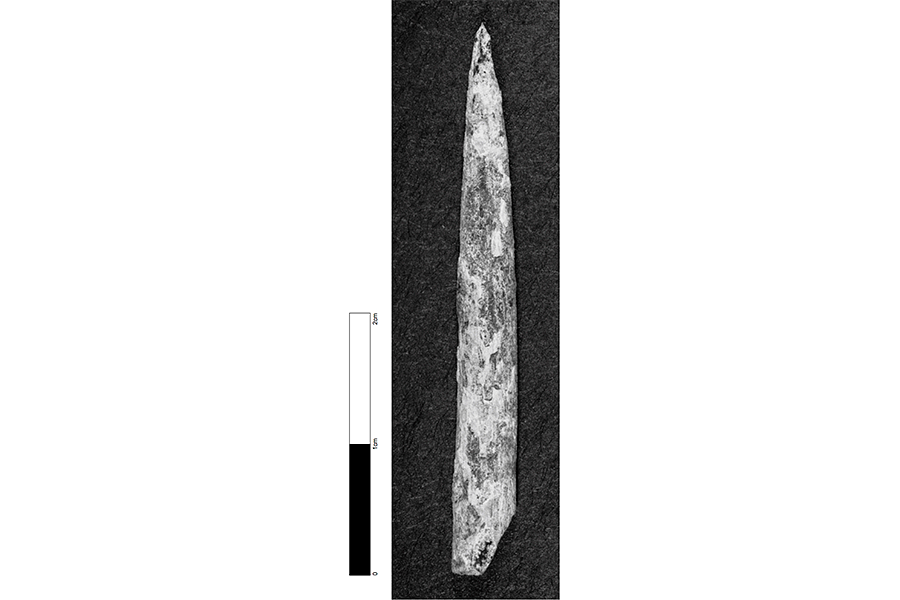Humans first settled in Australia much earlier than previous estimates
Loading...
Scientists often look at the peopling of Australia as a sort of benchmark for when modern humans were spreading out of Africa and establishing populations across the globe. But the details of that story are still hotly debated.
Estimates of when the first people arrived on the continent range from 45,000 to 60,000 years ago and researchers debate where these first Australians went next and how they lived.
But an artifact-filled ancient rock shelter in the southern interior of Australia may help archaeologists clarify that story.
Radiocarbon dating suggests the cliff-side shelter, called Warratyi, may have first been inhabited some 49,000 years ago, according to a paper published Wednesday in the journal Nature. And, as the paper's authors assert humans first arrived in northwest Australia some 50,000 years ago, that means humans may have hustled well over 1,000 miles over the course of just about a millennium.
This also would place humans in the continent's interior nearly 10,000 years earlier than other archaeological evidence has suggested, study lead author Giles Hamm of La Trobe University in Melbourne said in a Nature podcast. Previously researchers thought humans began spreading along the then-rainforested coasts of Australia upon arrival, populating the less lush interior no earlier than 40,000 years ago. But, as the Warratyi shelter is over 100 miles inland, that may not have been the case.
"It's potentially a landmark publication," Michael Petraglia, an anthropologist at the Max Planck Institute for the Science of Human History in Germany who was not part of the study, tells The Christian Science Monitor in a phone interview. "It's a very important new site and a very important new excavation," he says of the new study. "It's chock full of new information."
But Dr. Petraglia urges caution. "While I welcome this new excavation in an important area," he says, "It's only about three feet of sediment that represents more than 40,000 years of history." And because the site is "pretty low-resolution" and it's just one site, Petraglia says more sites will help put these new artifacts into context.
Still, Petraglia says the complex tools found at the site suggest that these first Australians were highly innovative and culturally advanced when they first arrived.
Among the oldest artifacts at the site, the researchers found red ochre on some tools suggesting the earliest known use of a pigment used today in cultural body adornment. The team also found tools made of bone that they dated to be between 38,000 and 40,000 years old, and tools used just a few thousand years later that were made by attaching multiple pieces, like a sharp stone to a shaft, for example.
"That's fantastic because some of the theories out there have been that they were sort of depauperate in their knowledge and that [the first] Australian aborigines were only making simple stone tools, for example, and very little else," Petraglia says. And "this is showing that people were already not only technologically advanced, but symbolically advanced, cognitively advanced."
Megafauna murderers?
In many regions, large animals began going extinct when humans arrived on the scene. But scientists have yet to agree whether humans had a hand in megafaunal extinctions or if, as the other popular theory suggests, climate change killed them off.
"Sites with evidence of megafaunal hunting are relatively common on other continents, such as North America, but a definitive case has been out of reach in Australia," Brian Codding, an anthropologist at the University of Utah who was not part of the study, tells the Monitor in an email.
But the Warratyi shelter could change that. Among the prehistoric tools, Dr. Hamm and his colleagues found a bone belonging to a Diprotodon optatum, a massive extinct herbivore thought to be the largest marsupial to have ever existed. It's unlikely this humongous animal clambered up the rocks itself, so the researchers think humans must have carried the bone up some 46,000 years ago.
It's unclear whether humans hunted the animal thought to weigh more than 6,000 pounds. But the researchers also found fragments of eggshells from the extinct, large flightless bird Genyornis newtoni among the oldest artifacts at the site. And they think some of those shells were burnt, suggesting the first Australians were already cooking up the birds' eggs.
"Many have argued that humans played no role in the extinction of Australia’s megafauna," Dr. Codding says. But based on the artifacts found associated with the animals' remains, "the authors of this paper suggest otherwise."
"If this finding is supported by further investigations," he says, "this will be a game-changer for Australian prehistory."









